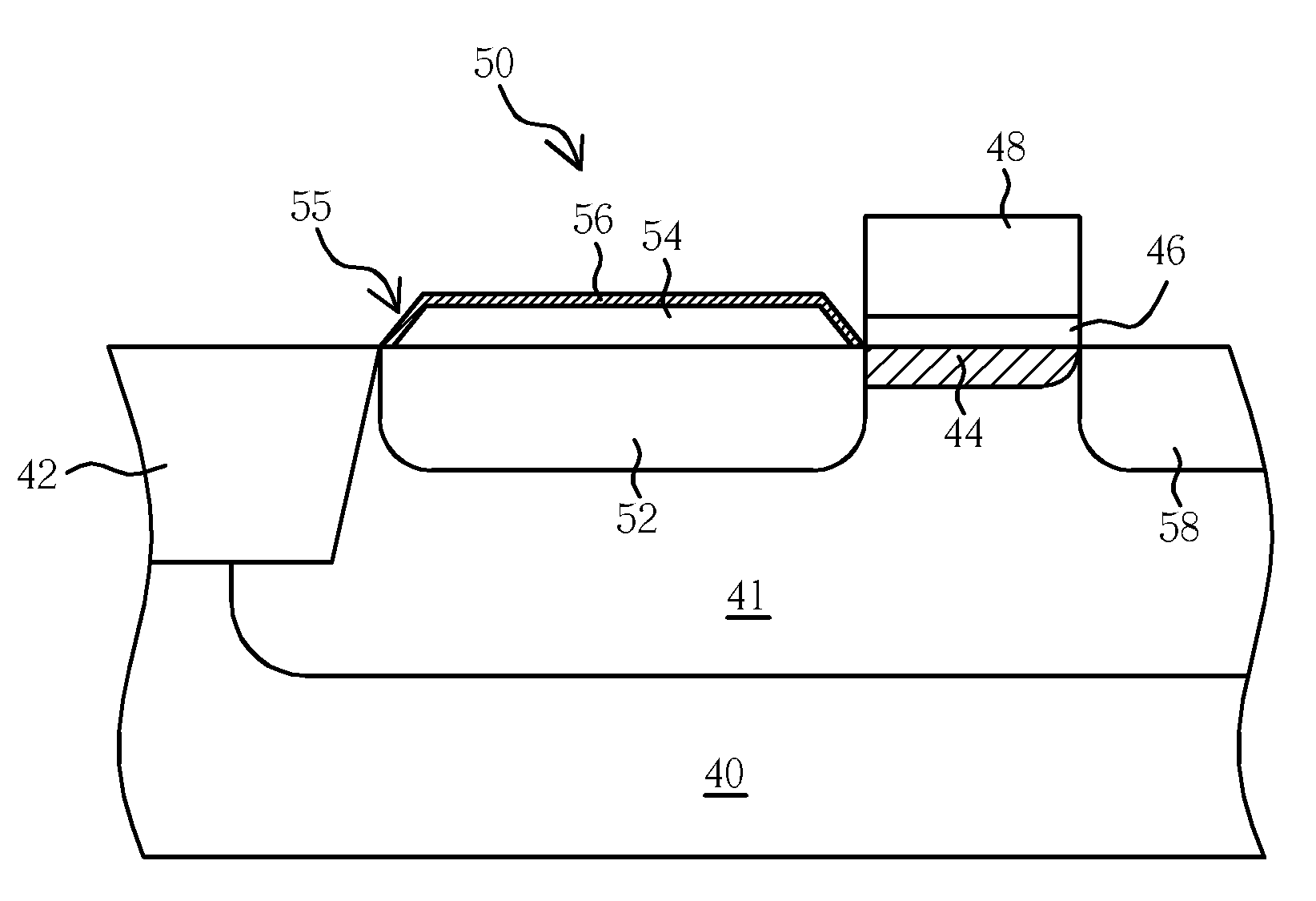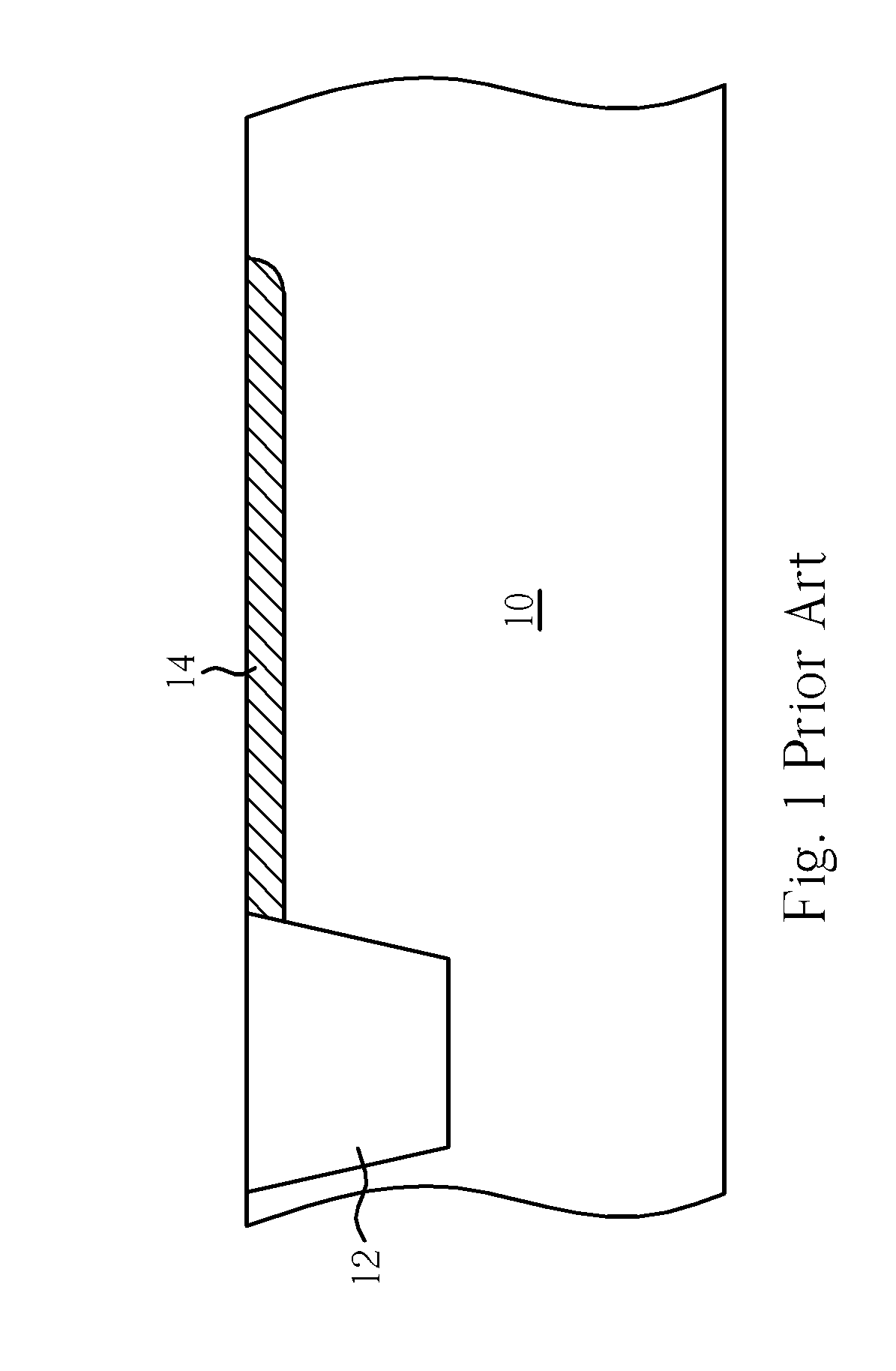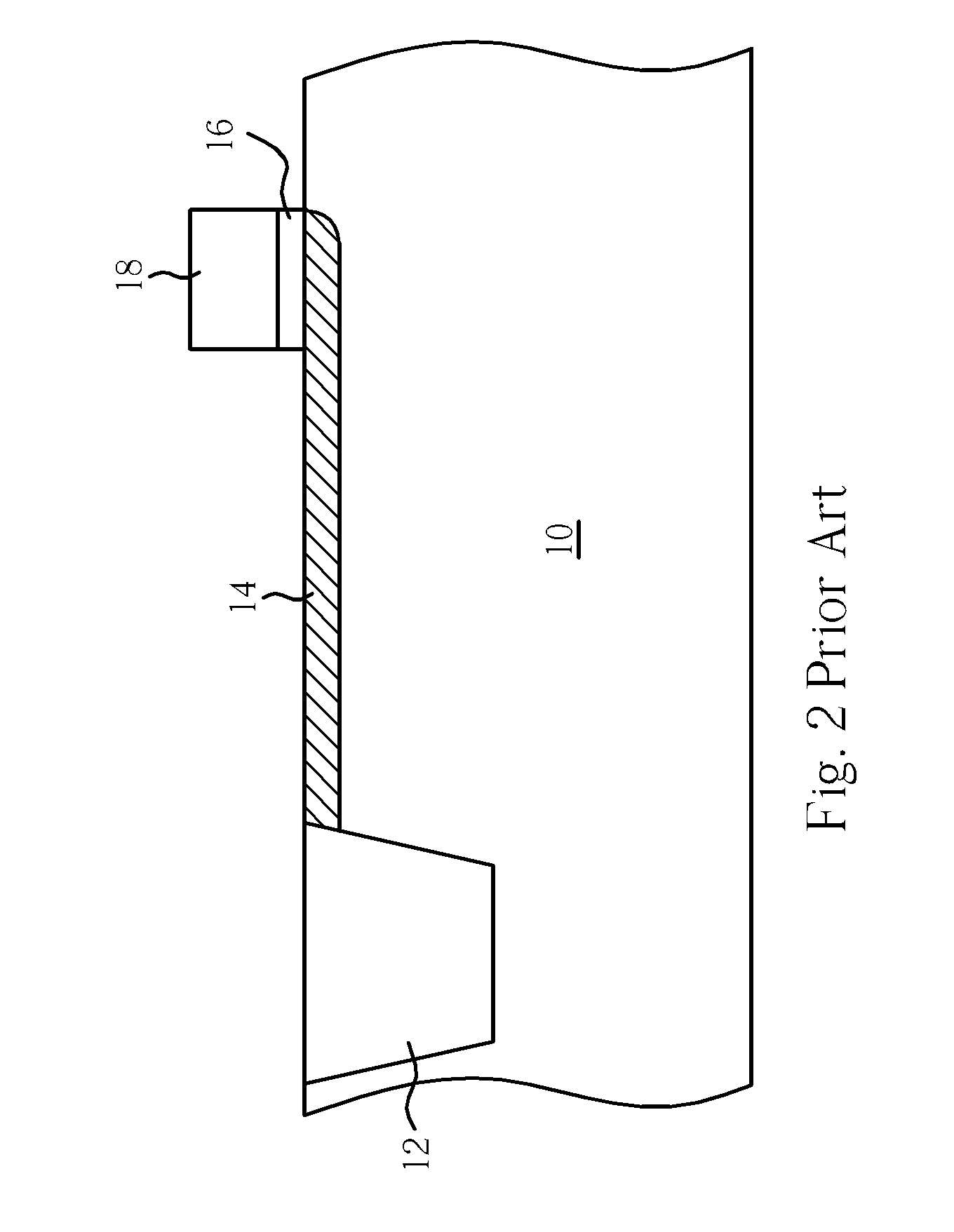Method for fabricating photodiode
a technology of photodiodes and photodiodes, which is applied in the direction of photovoltaic energy generation, electrical equipment, semiconductor devices, etc., can solve the problems of noise generated by dark current, ccd consumes a large amount of power, and the size of ccd is not easy to reduce, so as to reduce the noise of dark current, prevent the lattice structure from being damaged, and increase the sensitivity of the photodiode
- Summary
- Abstract
- Description
- Claims
- Application Information
AI Technical Summary
Benefits of technology
Problems solved by technology
Method used
Image
Examples
first embodiment
[0031]Please refer to FIG. 15 to FIG. 19. FIG. 15 to 19 are schematic diagrams illustrating the method for fabricating a photodiode in accordance with the present invention.
[0032]As shown in FIG. 15, first providing a substrate 40 comprises a P-type well 41 and a STI structure 42. These processes are well-known for those skilled in the art, for example, performing a well forming process, next, forming at least a trench (not shown) in the substrate 40 and forming an insulator (not shown) to cover the substrate 40 and filling up the trench. Following that, a STI structure 42 is formed in the substrate 40. The STI structure 42 isolates the unit pixels of the CMOS image sensor one from another. The STI structure can be replaced by other insulated structures such as field oxide. After that, a third doping region, the P-type doping region 44, is formed in the substrate 40 by the implantation process to adjust the threshold voltage of the transfer gate.
[0033]Referring to FIG. 16, a dielect...
second embodiment
[0039]Please refer to FIG. 20 to FIG. 24. FIG. 20 to 24 are schematic diagrams illustrating the method for fabricating a photodiode in accordance with the present invention.
[0040]As shown in FIG. 20, a substrate 40 comprising a P-type well 41 and a STI structure 42 is provided first. These processes are well-known for those skilled in the art, for example, performing a well forming process, next, forming at least a trench (not shown) in the substrate 40 and forming an insulator (not shown) to cover the substrate 40 and filling up the trench. Following that, a STI structure 42 is formed in the substrate 40. The STI structure isolates the unit pixels of the CMOS image sensor one from another. The STI structure can be replaced by other insulated structure such as field oxide. After that, a third doing region, the P-type doping region 44, is formed in the substrate 40 by the implantation process to adjust the threshold voltage of the transfer gate.
[0041]Referring to FIG. 21, a dielectri...
PUM
| Property | Measurement | Unit |
|---|---|---|
| conductive | aaaaa | aaaaa |
| insulator | aaaaa | aaaaa |
| lattice structure | aaaaa | aaaaa |
Abstract
Description
Claims
Application Information
 Login to View More
Login to View More - R&D
- Intellectual Property
- Life Sciences
- Materials
- Tech Scout
- Unparalleled Data Quality
- Higher Quality Content
- 60% Fewer Hallucinations
Browse by: Latest US Patents, China's latest patents, Technical Efficacy Thesaurus, Application Domain, Technology Topic, Popular Technical Reports.
© 2025 PatSnap. All rights reserved.Legal|Privacy policy|Modern Slavery Act Transparency Statement|Sitemap|About US| Contact US: help@patsnap.com



